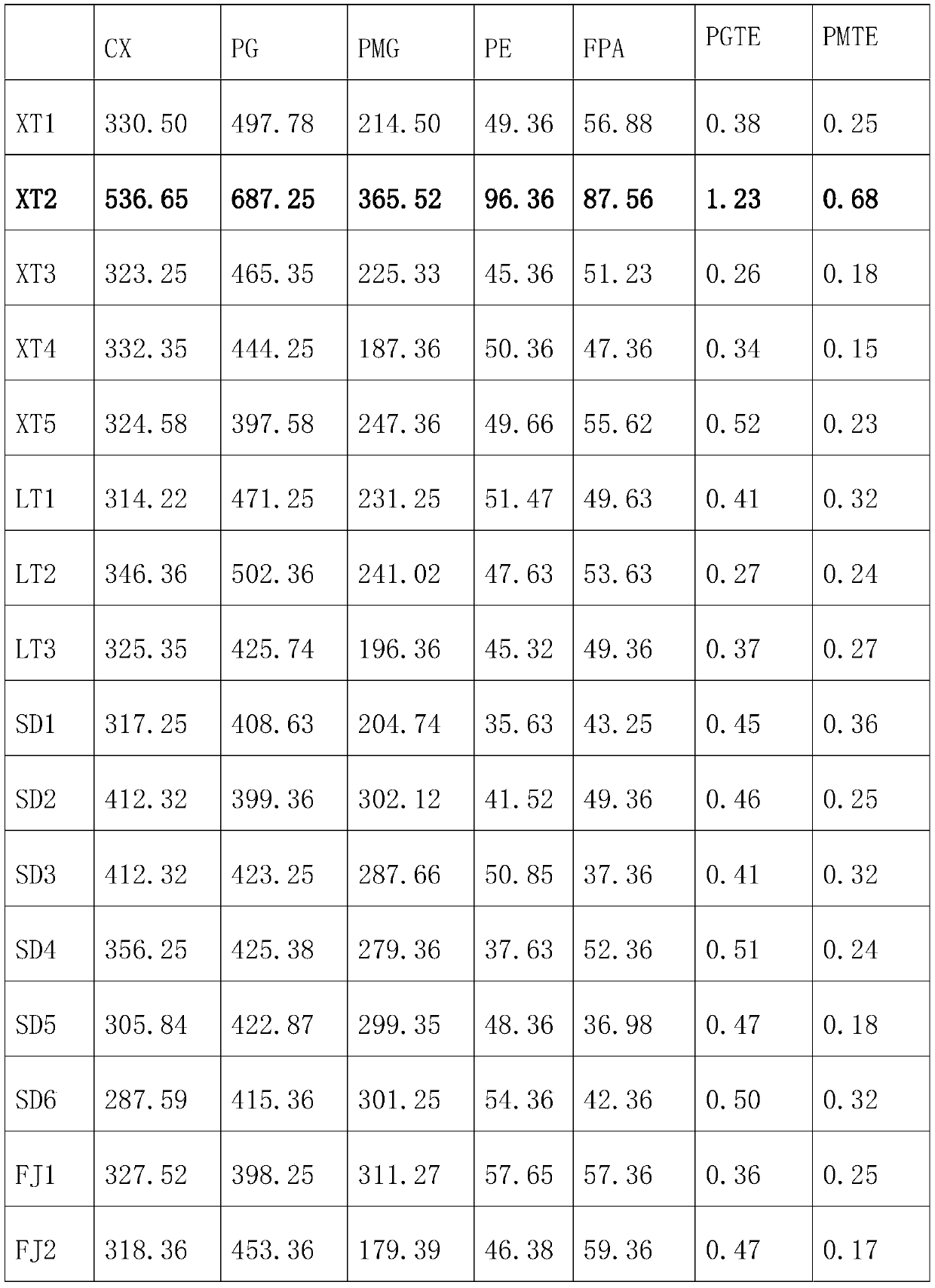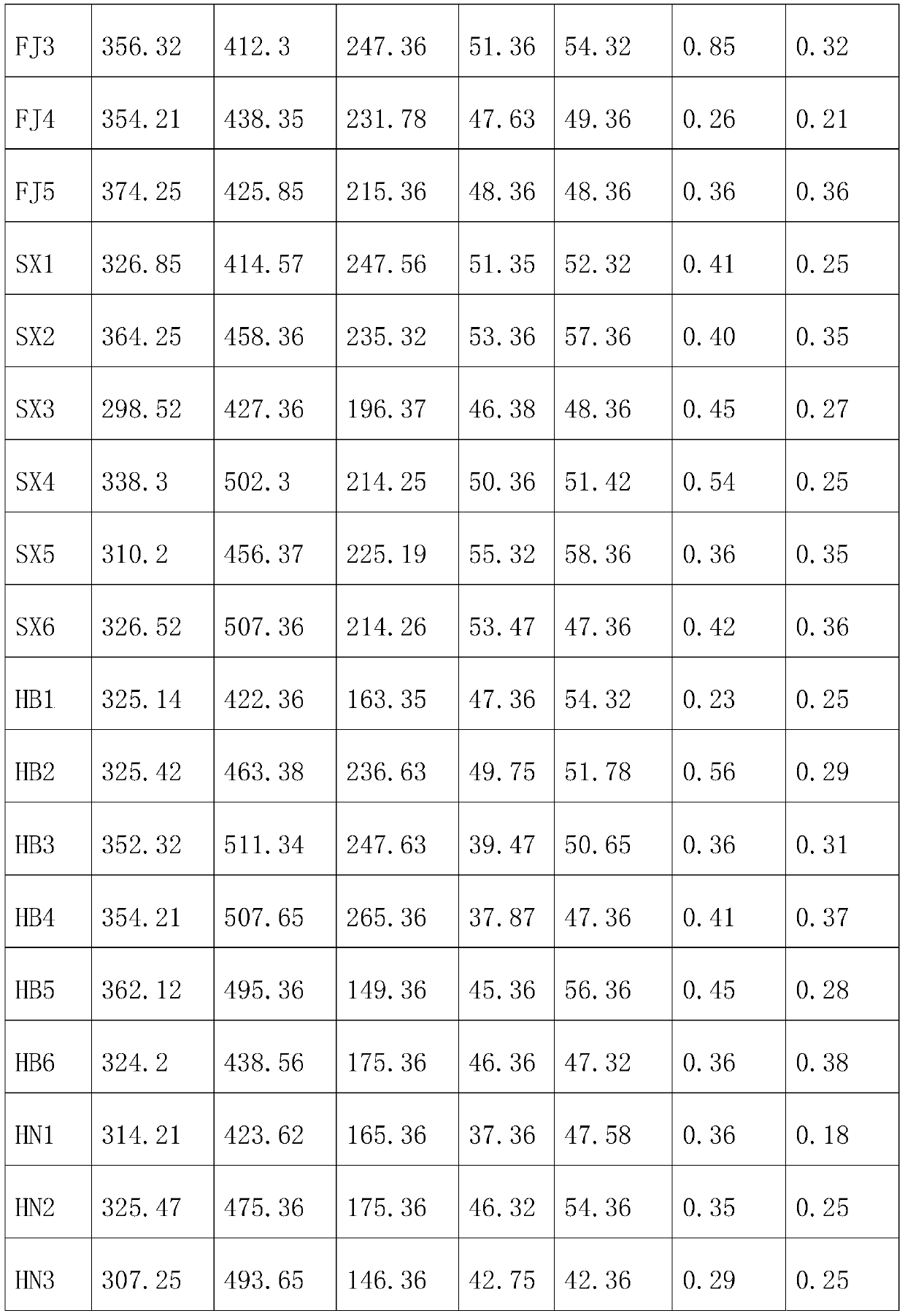Stem blight bacteria of asparagus induced to secrete high content of cell wall degrading enzyme, screening method of cell wall degrading enzyme and stem blight resistant varieties
A technology for asparagus stem blight and asparagus stem blight, which is applied in the biological field, can solve the problems of defense enzymes and asparagus blight bacteria and the like, and achieves the effect of preventing asparagus stem blight
- Summary
- Abstract
- Description
- Claims
- Application Information
AI Technical Summary
Problems solved by technology
Method used
Image
Examples
Embodiment 1
[0047] (1) Isolation and screening of pathogenic bacteria
[0048] Separation steps:
[0049] (1) Asparagus stem blight specimens were collected from 6 provinces including Jiangxi, Fujian, Hainan, Shandong, Shanxi, and Hebei, and stored in a 4-degree refrigerator for separation.
[0050] (2) Potato dextrose agar medium (potato dextrose agar medium) was prepared, after autoclaving at 121°C, pour 10 ml each into plates, cool down and set aside.
[0051] (3) Cut the specimen into a small piece of 5 mm × 5 mm at the junction of disease and health, put it in 75% alcohol for disinfection for 1 minute, transfer it to 0.1% mercury liter for disinfection for 30 seconds, and then transfer it to 75% alcohol for disinfection 1 minute, then transferred to sterile water to wash 2 times, and finally placed on absorbent paper to absorb the water.
[0052] (4) Transfer the small pieces that have been sucked dry to the potato dextrose agar medium plate, and then place them in an incubator at ...
Embodiment 2
[0068] Example 2 Comparing the Effects of Cell Wall Degrading Enzymes Induced by Various Pathogenic Bacteria
[0069] The pathogenic strains XT1, XT2, FJ2, FJ3 and FJ5 of Asparagus stem blight were all inoculated on asparagus stalks, and the types and quantities of induced cell wall degrading enzymes were compared. Table 1
[0070] Table 1 The activity of cell wall degrading enzymes induced by inoculation of several pathogenic strains of Asparagus stem blight on asparagus stalks (with 1% sodium carboxymethylcellulose as the induction substrate)
[0071]
[0072]
[0073]
[0074] Table 2 The activity of cell wall degrading enzymes induced by inoculation of several pathogenic strains of Asparagus stem blight on asparagus stalks (with 1% pectin as the induction substrate)
[0075]
[0076]
[0077]
Embodiment 3
[0078] Example 3 Variety Screening
[0079] (1) Inoculate Phomopsis asparagi with the preservation number: CGMCC No.13874 on asparagus stalks, and after 20 to 50 days of inoculation, investigate according to the 5-level grading standard listed below, the incidence:
[0080] The 5-level grading standard is as follows
[0081] Grade 0: no disease;
[0082] Grade 1: The diseased area accounts for less than 10% of the plane area where the lesion is located;
[0083] Grade 2: The diseased area accounts for 10.1% to 30% of the plane area where the lesion is located;
[0084] Grade 3: The diseased area accounts for 30.1% to 50% of the plane area where the lesion is located;
[0085] Grade 4: The diseased area accounts for 50.1% to 70% of the plane area where the lesion is located;
[0086] Grade 5: The diseased area accounts for more than 70% of the plane area where the lesion is located.
[0087] Table 3 Severity classification and symptom description of asparagus stem blight ...
PUM
| Property | Measurement | Unit |
|---|---|---|
| diameter | aaaaa | aaaaa |
Abstract
Description
Claims
Application Information
 Login to View More
Login to View More - R&D
- Intellectual Property
- Life Sciences
- Materials
- Tech Scout
- Unparalleled Data Quality
- Higher Quality Content
- 60% Fewer Hallucinations
Browse by: Latest US Patents, China's latest patents, Technical Efficacy Thesaurus, Application Domain, Technology Topic, Popular Technical Reports.
© 2025 PatSnap. All rights reserved.Legal|Privacy policy|Modern Slavery Act Transparency Statement|Sitemap|About US| Contact US: help@patsnap.com



